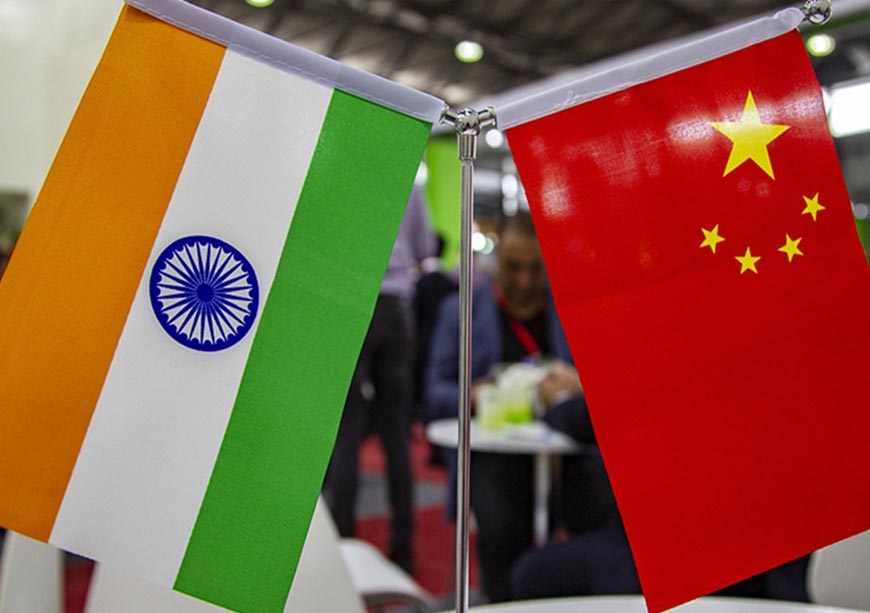
THE Indian government announced on October 21 that an agreement was reached between India and China on patrolling arrangements along the Line of Actual Control (LAC). This is a welcome development that hopefully would lead to the normalisation of relations between the two neighbouring countries.
The bilateral relations between India and China had deteriorated after the border clashes in Galwan valley in 2020. Both countries acted to ensure that these clashes do not lead to a full blown war. Since 2020, 31 rounds of talks were held at the military and diplomatic levels. While Corps Commanders of the two sides held military level talks, the diplomatic level talks were held under the aegis of the Working Mechanism for Consultation and Coordination (WMCC) on India-China Border Affairs.
The talks moved to a decisive phase with the intervention of the political leadership, which realised the necessity of restoring normal relations. Prime Minister Modi reflected this position when he stated in April that ‘stable and peaceful relations between India and China are important for not just our two countries but the entire region and world’. Minister for External Affairs S Jaishankar met his Chinese counterpart, Wang Yi, twice in the space of two months, July and August. In September, NSA, Ajit Doval, met Wang Yi in St Petersburg, Russia, on the sidelines of the BRICS+ National Security Advisers meeting. This was followed by two back-to-back meetings of the WMCC. Hence as Jaishankar has stated, the present agreement is a ‘product of very patient and very persevering diplomacy’, which is the correct path for the resolution of disputes between countries.
All these diplomatic efforts paved the way for the bilateral meeting between Prime Minister Modi and Chinese President Xi Jinping on the sidelines of the BRICS Summit, which is in session in Kazan, Russia. This meeting is significant because it is the first time that the two leaders have had a bilateral meeting since the border standoff in 2020. Both sides agreed to take steps to stabilise and rebuild bilateral relations.
The economic problems confronting the Indian bourgeoisie has forced them to lobby for easing the ability to do business with China. According to the data of Ministry of Commerce, China has emerged as India's top import source with 56.29 billion dollars worth of inbound shipments during the April-September period of this fiscal year. In a globalised economic world order, it is increasingly recognised that it is beneficial for both countries to increase economic cooperation. Certain industries for the production of goods like electric vehicles (EVs), smartphones, solar panels and medicine have been identified by the Indian government to transform the country into a manufacturing hub. Most of these industries require the restoration of economic relations with China.
The current negative stance to Chinese investments in the manufacturing sector through joint ventures must change. The rejection of a one billion dollar investment by the Chinese giant BYD, which is the world’s largest producer of electrical vehicles, through a joint venture with an Indian company in 2023 was a short-sighted step. The setting up of a plant to manufacture electric vehicles and batteries would have helped India access latest technology and production processes.
The need for normalisation of relations between the two countries was also felt due to the fast changing geo-political situation. The war in Ukraine and Israeli aggression on Gaza and West Asia are having a severe impact on the supply of resources, trade routes and also the relations between countries. Many countries are realising the toxicity of putting ‘all their eggs in one basket’ – the US. In this background the blocs like BRICS+ are gaining importance and many countries are openly expressing their desire to join such groupings. Saudi Arabia and Iran, regional powerhouses in West Asia have recently been made members of this grouping. India cannot be an outlier in this group, with these geo-political changes taking place around it. It is hence natural to maintain good relations with the founding members of the bloc, rather than have an antagonistic relationship.
Following the border clashes in 2020, Indian government had further strengthened its ties with the US. It has signed various defence cooperation agreements, including real-time intelligence sharing regarding the India-China disputed border. That includes a more than 3 billion dollar deal for India to purchase 31 armed Guardian drones to track troop movements on our Himalayan border. India is a member of the US-led Quad grouping, which includes Australia and Japan. The RSS paper The Organiser (September 22, 2024), also commented that in the background of the US withdrawal from Afghanistan and the unreliability of its policy positions, particularly if Donald Trump once again becomes the president, it would be prudent for the government to normalise relations with China.
India and China share a long border of more than 3,400 kilometres. A major portion of the border is not properly demarcated and has been the reason for a long-standing dispute between the two countries. What is required now is to revive the mechanisms to address the gamut of disputes on the India-China border. The 1993 Border Peace and Tranquility Agreement and the 2013 Border Defence Cooperation Agreement must be built upon. At the same time, the Modi government must take steps to expand economic relations and people-to-people exchanges, giving particular attention to getting investments in the manufacturing sector which will enhance our technology and production capacities.
(October 23, 2024)


